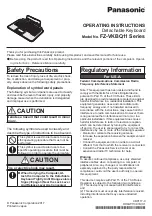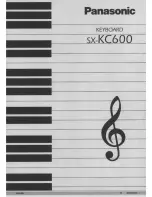
5
Introduction
Hammond XK-2 Quick Features Guide
PITCH
MODULATION
MASTER VOLUME Control
This Rotary Control allows you to control the total or maximum volume of the entire instrument.
Turn this control to the right to increase the total volume, and to the left to decrease the total
volume.
REVERB Control
This Rotary Control allows you to control the total or maximum volume of digital Reverb. Turn
this control to the right to increase the amount of Reverb, and to the left to decrease the amount
of Reverb. Reverb is explained in detail starting on page 47.
OVERDRIVE Control
Overdrive adds the fuzzy, raspy, "dirty" sound created by the vacuum tubes of a tube-style
Leslie Speaker when its volume is pushed past its sound limit. This Rotary Control allows
you to control the total or maximum amount of Overdrive. Turn this control to the right to
increase the amount, and to the left to decrease the amount.
BASS and TREBLE Tone Controls
These two Rotary Controls, located on the Accessory Panel on the back of the XK-2,
allow you to control the Bass and Treble response of the XK-2 tones. Turn each
control to the right for the maximum amount of Treble or Bass. Turn each control
to the left for the minimum amount of Treble or Bass. For a “flat” frequency
response, turn each control to its center position.
Ë
Pitch Bend and Modulation Wheels
Pitch Bend
You can adjust the pitch range, plus or minus, 12 half steps. For more information
about how to change the Pitch Bend range, see page 90.
Modulation Wheel
The Modulation Wheel has several functions that can be selected. The two main uses
are:
1.
To send MIDI data to a connected MIDI device. Normally the
Modulation Wheel will send Animation (Controller #1) but can be
used to send any data for any numbered MIDI Controller. For more
information about this function, see page 62.
2.
To control certain internal functions of the XK-2 such as Leslie Slow/Fast. For more information about
this function, see page 91.
Moving either control forward (away from you) will increase the intensity of the corresponding control. Moving
either control downward (toward you) will decrease the corresponding control's level.










































